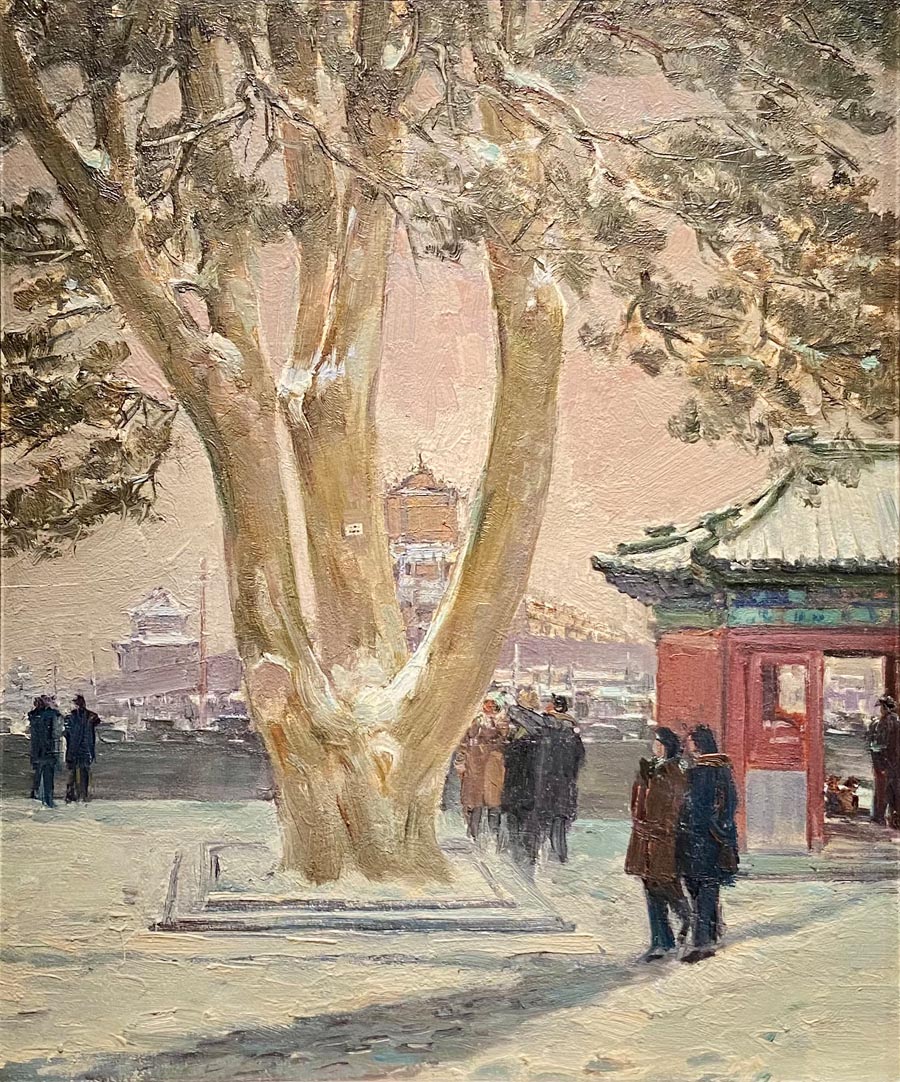 |
|
An oil painting, titled Tuancheng, that depicts a snowy winter in Beijing's Beihai Park. [Photo provided to China Daily] |
Song, who died in 1992, didn't have a chance to show this body of work during his lifetime. It was not until 2000 that these paintings made their public debut at an exhibition held in his memory.
Fan Di'an, dean of the Central Academy of Fine Arts, says: "Song's works preserve the multifaceted landscape of a city, old and new, and underneath his figurative brushwork, Song injected rich emotions, allowing his work to stand the test of time."
Xu Beihong the eminent artist, and a close friend of Song's, is said to be the one who suggested Song paint Beijing's historical architecture.
"Song's paintings show the harmony between architecture and its surroundings,"Fan says. "The colors are vivid and arranged tastefully to give a refreshing look to these old buildings."
Trained in China and Japan, Song inherited from impressionists a sensitivity to color and the contrast between light and shadow. Beside oil painting, he also worked with watercolor and classical Chinese painting, and in them he presented delightful luminosity, performing with a symphony of colors.
The exhibition also shows a dozen classical Chinese ink paintings, marking Song's resurgence in the late 1970s and throughout the '80s.